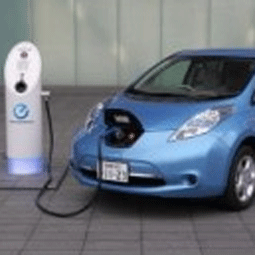Pure electric cars are, well, a pure disaster. Over 100 companies have missed plans and heroically absorb Olympian losses. Some sell their cars at less than the cost of the traction battery alone. Toyota’s has been a lone voice that said pure electric car technology is not ready for prime time.
The popular view is that we must wait for the billions being spent on battery technology to pay off – increasing the range of cars and reducing the cost of batteries. But what is more likely is a multiplicity of advances plus Apple-like inspired design – notably absent so far – that will bring it home.
Indeed, that is happening.
Everything about an electric car is facing total change. Different materials are being tested for bodywork. New structural components are leading to smart skin. Laminar electrics, printed electronics and totally new components are coming along, too.
Let’s look at a few.
Printing technology
T-Ink Inc. has printed, laminated and then moulded electrics in cars, starting with the Ford Fusion that will be offered as pure electric, hybrid electric or conventional. This can save up to 40% in weight, space and cost. It also improves reliability as moving parts are eliminated and the unit becomes a sealed, entirely solid structural component. The new printed technology first appeared as a thin overhead control cluster.
Supercapacitors instead of batteries The Bolloré Pininfarina pure electric Bluecar added a large supercapacitor in 2012 to improve performance and lengthen battery life. Such a move can even reduce the need for a battery or increase range by making accessible more of the energy stored in the battery. The 2012 Mazda pure electric sports car does the same. The Riversimple fuel cell car in the U.K. has completely replaced its lithium-ion battery with a supercapacitor, as have the MAN hybrid bus and Sinautec pure electric buses, all giving extended lifetime, cost over life, performance and other benefits. A halfway product is the supercap battery, which may have a place in cars, improving range and performance.
Energy harvesting
Multiple energy harvesting will become commonplace with electric cars, probably including the energy harvesting shock absorbers that are first being launched in larger vehicles. Small wind turbines and the new solar flags may automatically appear when the electric car is parked. Eventually, thermoelectric harvesting may work on hot batteries and motors, too.
Auto electronics
Electrics and electronics are growing to exceed 50% of the cost of an electric car. So, improvements here are very important – one being the incorporation of circuitry into motors, batteries and range extenders, rather than having it in separate boxes.
New components
Radically new components will soon include silicon carbide and gallium nitride power semiconductors, replacing silicon.
Combine the above with better aerodynamics and more efficient powertrains and affordable cars with a range of 300-400 miles should become mainstream in a decade. That, possibly, could be the tipping point for sales. With almost no correlation between questionnaires and the subsequent behaviour of respondents, we shall just have to wait and see.
Once electric cars have reached that tipping point, we will have to see what it will take to get flying cars off the ground. See what I did there?
Peter Harrop is the chairman of IDTechEx, a market research and consulting firm focused on emerging technologies.






![How to confidently raise venture capital… with Jack Delosa [CHEAT SHEET]](https://anthillonline.com/wp-content/uploads/2016/04/jack-de-losa-confidently-raising-venture-NFSU-rebrand-01.pdf-Box-2016-04-19-12-37-42-300x194.png)
![Four Page Digital Marketing Strategy [FREE RESOURCE]](https://anthillonline.com/wp-content/uploads/2015/01/FOUR-PAGE-IMAGE-100x75.png)
![How Master the Art of Sales Even if it Makes You Feel All Weird and Icky Inside with Phil Anderson [CHEAT SHEET]](https://anthillonline.com/wp-content/uploads/2015/08/PHIL-ANDERSON-COVER-100x75.png)
![The Top 5 Most Insanely Dumb Mistakes made by Rookie and Seasoned LinkedIn Users, with David Hobson [FREE REPORT]](https://anthillonline.com/wp-content/uploads/2015/07/Screen-Shot-2015-11-26-at-14.29.18-100x75.png)
![Learn how to use Instagram as a business tool [FREE INFOGRAPHIC]](https://anthillonline.com/wp-content/uploads/2012/12/nickelbackinstagram-100x75.jpg)
![Instagram for Business… in 12 steps [FREE INFOGRAPHIC]](https://anthillonline.com/wp-content/uploads/2015/08/Capture7-100x75.jpg)

![Will social media kill off media releases forever? That’s that goal of Coke’s PR team [VIDEO]](https://anthillonline.com/wp-content/uploads/2013/12/CokePeanuts-300x325.jpg)
![How to make a brand statement and how not to. Apple vs Microsoft [VIDEO]](https://anthillonline.com/wp-content/uploads/2013/06/AppleFeel-300x350.jpg)
![How to market your business when you don’t have a business yet [CHEAT SHEET]](https://anthillonline.com/wp-content/uploads/2016/01/oli-gardner-memes-02-300x194.jpg)
![Learn how to devise winning business ideas in four steps with Martin Martinez [CHEAT SHEET]](https://anthillonline.com/wp-content/uploads/2015/07/Screen-Shot-2015-11-26-at-13.44.27-100x75.png)
![How to build a retail empire with James Webber [FREE REPORT]](https://anthillonline.com/wp-content/uploads/2015/06/james-webber-instagram-memes-01-100x75.jpg)
![Inbound Marketing Reloaded with James Tuckerman [FREE REPORT]](https://anthillonline.com/wp-content/uploads/2015/07/cover-3d-347h-x-253w--100x75.png)
![Strategic Alliances with Simone Novello [FREE INFOGRAPHIC]](https://anthillonline.com/wp-content/uploads/2015/08/Capture6-100x75.jpg)
![New Zealand’s Xero eyes US IPO, further disruption as subscribers increase [INFOGRAPHIC]](https://anthillonline.com/wp-content/uploads/2014/07/sruuuuujana-212x194.png)
![Ever wonder if your ‘content marketing’ is really just crap? You gotta see this! [INFOGRAPHIC]](https://anthillonline.com/wp-content/uploads/2014/08/content-100x75.jpg)
![7 Business Lessons From Game of Thrones [INFOGRAPHIC]](https://anthillonline.com/wp-content/uploads/2014/10/infographic-games-of-thrones-041-100x75.jpg)
![How to build your own Media Empire… In seven steps with Nathan Chan [INFOGRAPHIC]](https://anthillonline.com/wp-content/uploads/2014/10/Nathan-Chan-Infographic-e1413419529176-100x75.jpg)
![5 Business Lessons From Tinder [INFOGRAPHIC]](https://anthillonline.com/wp-content/uploads/2014/10/Tinder-Elegant-Infographic-100x75.jpg)



